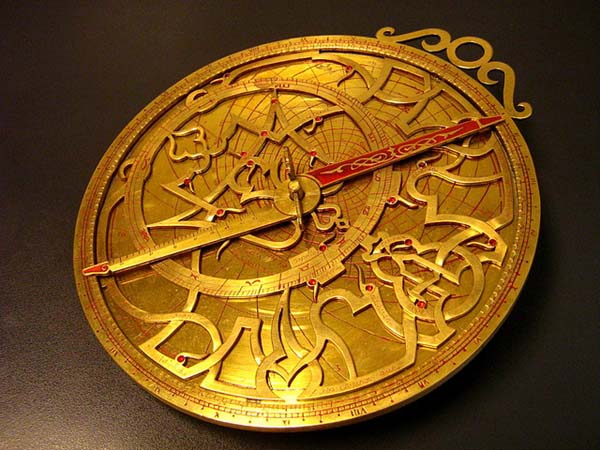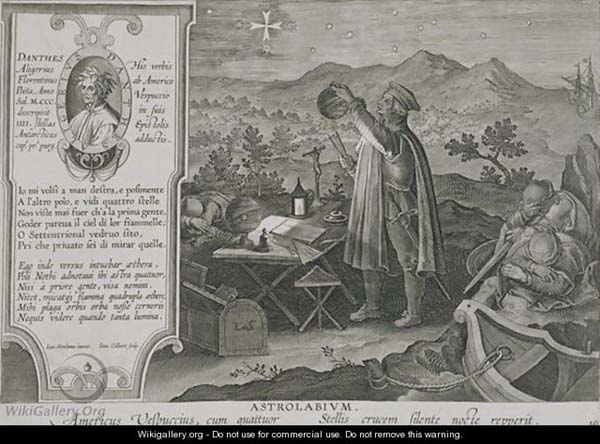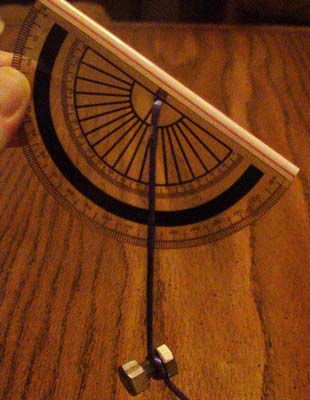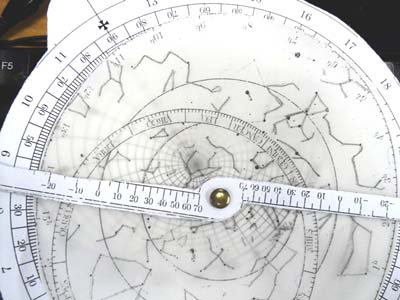Report
by Kathleen Horner
- Published: Tuesday, May 07 2013 14:43
It's May and the night sky is jumping with lots of activity. May is a good month to start using your handmade Astrolabe. What's up there? For one thing, the Big Dipper/The Plough is going to be easy to spot. Just look straight up in the night sky. As we say good-bye to Jupiter when it slowly dips into the western sky this month, Venus , Saturn and Mercury along with some of the night's brightest stars like Spica, Arcturus, and Vega will rule May's night sky. Look for fireworks in the sky with the Eta Aquarid Meteor showers peaking on the morning of May 5th and then an annular solar eclipse for Australia and the Pacific. May will be a great month to experiment with your newly created Astrolabe. Step back in time to experience how the ancient astronomers calculated positions of the stars, planets and the Sun by the use of a simply made astrolabe. This project will be astronomical fun for the whole family.
 Astrolabe
Astrolabe
An astrolabe is an astronomical instrument for taking the altitude of the sun or stars and for the solution of other problems in astronomy and navigation. The astrolabe was used by Greek astronomers from about 200 b.c. and by Arab astronomers from the Middle Ages until it was superseded by the sextant. Simply put: When scientists describe the position of a star in the sky, they measure its position relative to the horizon. An astrolabe measures how high above the horizon the star is in degrees.
 Oil Painting by Jan van der Straet
Oil Painting by Jan van der Straet
Hipparchus, astronomer in the second century, may have been the inventor of the planispheric astrolabe. However, the mathematical theory which serves as the foundation for the stereographic projection used in the planispheric astrolabe was provided in the second century AD, by Ptolemy, in his "Planisphaerium"(celestial plane). The philosopher and teacher, Hypatia of Alexandria, used the astrolabe in her observations of the night sky, also.
To learn more about the history of the Astrolabe check out the links below:
This one is wonderfully instructive for children: http://almostunschoolers.blogspot.com/2010/03/making-simple-astrolabe-for-kids.html
Detailed history of the Astrolabe:
http://www.joh.cam.ac.uk/library/library_exhibitions/schoolresources/astrolabe/what
http://www.ifa.hawaii.edu/tops/astl-hist.html
HOW TO CREATE A HANDMADE ASTROLABE:
Before we get started, here's a great link for monthly sky chart maps for both Northern and Southern Hemispheres. It will be helpful to have a map handy to help you chart the position of celestial objects using your Astrolabe.
Let's start with this simple astrolabe that requires nothing but a plastic protractor, metal washer and a straw. All the details and steps in making one including a great write up on the history that everyone in the whole family can understand is located in Link A, Teresa Coppens' Hubpages.
 Hand Made Astrolabe (Link A)
Hand Made Astrolabe (Link A)
This page (Link B) has directions for making an astrolabe from paper cardstock. You can also use file folders and other heavy duty paper sheet products. I made one from paper cardstock and it works amazingly well outside under the night sky. Peering through the straw zooms the eye right towards the object you wish to locate. The weighted string falls right on the degrees marker on the astrolabe where the object is located above the horizon. It's fun, try it!
 Paper Cardstock Astrolabe (Link B)
Paper Cardstock Astrolabe (Link B)
These directions (Link C) offers a more involved paper astrolabe using the four plates found on an authentic astrolabe. It's a little more challenging to make, but it would be more versatile in its use. This astrolabe is calibrated for latitude 52° North. It will work across northern Europe and much of the United States of America. If you would like an astrolabe kit calibrated to a different latitude please download the file appropriate to your latitude from this link.
 Model Astrolabe (Link C)
Model Astrolabe (Link C)
If you want to share photos of your hand-crafted AstroCraft projects, please share with us here on Astronomers Without Borders photo gallery page or on Facebook. Check back here for another AstroCraft project in June. Keep looking up!
###
My Recent Reports
Contact
| Location: | Sri Lanka  |
|---|---|
| Website: | thilinaheenatigala.blogspot.com |







Comments